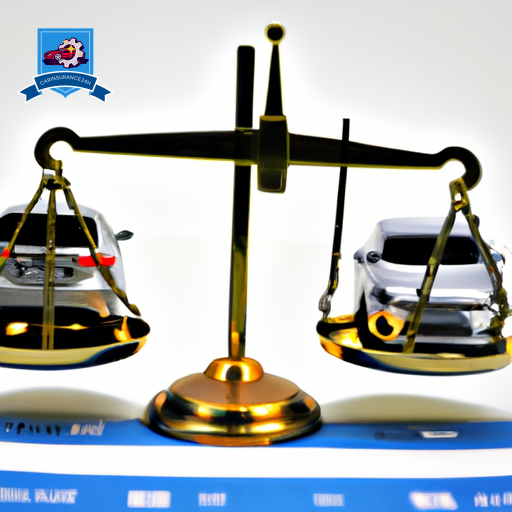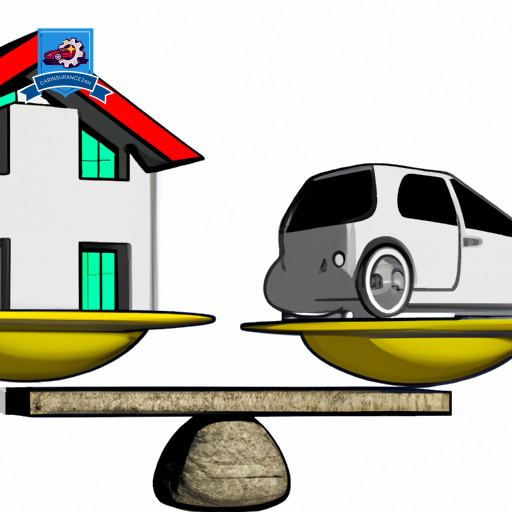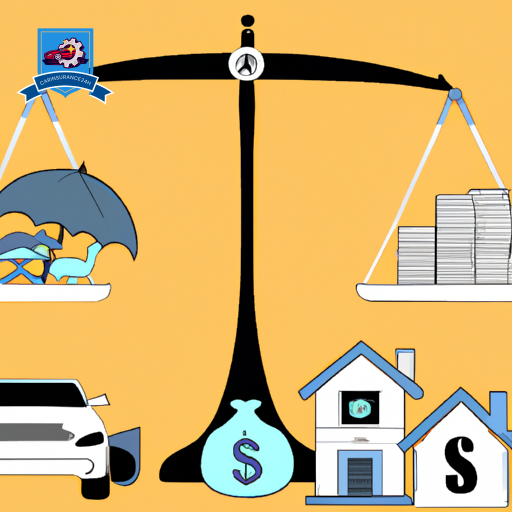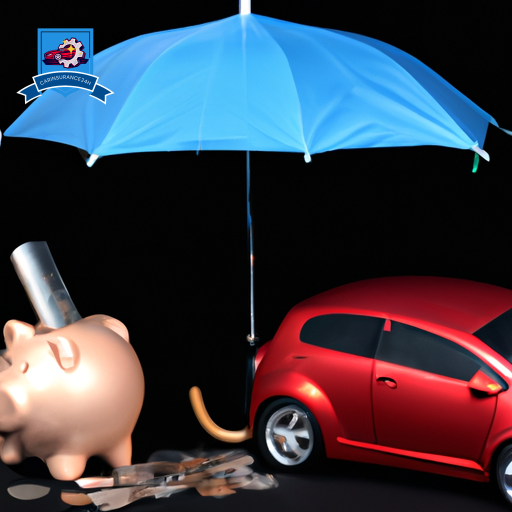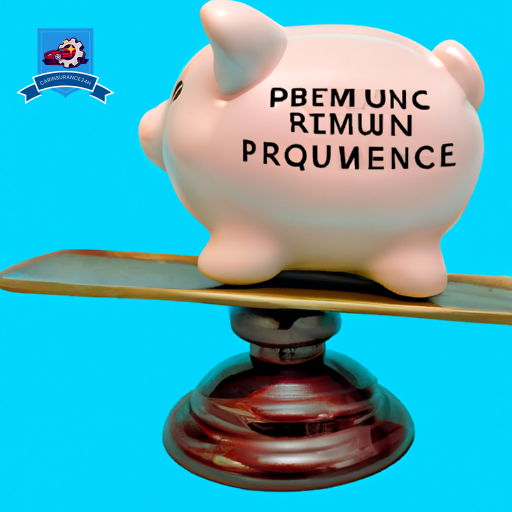In the domain of auto insurance, understanding the nuances of deductible waivers can greatly influence policyholders’ financial responsibilities during a claim.
Basically, a deductible waiver is an agreement within an auto insurance policy that exempts the insured from paying the standard deductible under certain conditions. This feature, while offering apparent benefits, incorporates various types, each with specific eligibility criteria and activation processes.
The implications of opting for a deductible waiver extend beyond immediate cost savings, affecting overall insurance premiums and coverage strategy.
As we explore the intricacies of deductible waivers, it becomes evident that their impact on policyholders’ decisions is profound, raising critical considerations for anyone looking to optimize their auto insurance policy.
Understanding Deductibles

Before delving into the nuances of deductible waivers, it is imperative to understand what a deductible is in the context of auto insurance policies. A deductible represents the amount of money the policyholder is responsible for paying out of pocket before the insurance company covers the remaining costs associated with a claim. This concept is fundamental to the structure of most auto insurance agreements and plays a critical role in the claim process.
The process of deductible calculation is influenced by several factors, including the type of coverage selected and the policyholder’s risk profile. Insurers assess the likelihood of a claim being filed based on the policyholder’s driving record, the type of vehicle insured, and other risk-related factors. As a result, the deductible amount can vary significantly among policyholders. Choosing a higher deductible generally lowers the policy premium, as it reduces the insurer’s potential payout in the event of a claim.
Policy renewal presents an opportune time for policyholders to review and adjust their deductible. This adjustment is a strategic decision that should align with the policyholder’s current financial situation and risk tolerance. It is also a moment to re-evaluate the overall coverage needs based on any changes in the policyholder’s life, such as acquiring a new vehicle or changes in driving habits.
Understanding the intricacies of deductibles is vital for policyholders to navigate their auto insurance policies effectively. This knowledge aids in making informed decisions about coverage levels and deductible amounts, ensuring that the policyholder is adequately protected while managing out-of-pocket expenses.
What Is a Deductible Waiver?

A deductible waiver is a provision in an auto insurance policy that allows the policyholder to avoid paying the deductible under certain conditions. This feature can be particularly appealing as it potentially saves the policyholder significant out-of-pocket expenses in the event of a claim. The origins of deductible waivers can be traced back to the insurance industry’s efforts to offer more customizable and user-friendly policies, while also managing their risk exposure efficiently.
Understanding the concept and application of deductible waivers requires knowledge of both their foundation and the specifics of how they operate within the framework of an insurance policy. Here are three critical aspects to take into account:
-
Waiver Origins: Deductible waivers emerged as a solution for policyholders seeking financial relief from the burden of high deductibles. Insurers introduced these waivers as an optional add-on to enhance policy appeal and competitiveness in the market.
-
Conditions for Waiver Application: Not all scenarios qualify for a deductible waiver. Common conditions might include the nature of the claim, the party at fault, or specific events outlined in the policy. Understanding these conditions is essential for policyholders to leverage the waiver effectively.
-
Policy Exclusions: It’s important to be aware that deductible waivers have limitations and may not apply to all types of damages or incidents. Policy exclusions play a significant role in determining the applicability of a deductible waiver, making it important for policyholders to thoroughly review their policy documents.
Types of Deductible Waivers

Having explored the foundational aspects and operational conditions of deductible waivers, we now turn our attention to the various types of deductible waivers available in auto insurance policies. Deductible waivers can greatly influence the financial aspects of a claim, but it’s important to understand their specific types, waiver limitations, and associated costs.
| Type of Deductible Waiver | Description | Key Considerations |
|---|---|---|
| Collision Deductible Waiver (CDW) | This waiver applies when the insured is not at fault in an accident with an uninsured motorist. | Waiver limitations often include the requirement to identify the other party. Waiver costs may vary based on policy terms. |
| Inclusive Deductible Waiver | Applies to non-collision incidents, such as theft or natural disasters. | Limitations could include specific scenarios under which the waiver is applicable. Costs are influenced by the likelihood of such events. |
| Glass Deductible Waiver | Specifically covers the repair or replacement of the vehicle’s glass without requiring the deductible payment. | Some policies may limit this waiver to repairs only, not replacements. There might be an additional cost for including this waiver. |
Each type of deductible waiver serves a distinct purpose and comes with its own set of conditions. Knowing these can help policyholders make informed decisions about their coverage. Waiver limitations are particularly important as they define the circumstances under which the waiver can be applied, while waiver costs must be considered in the context of the overall value and cost-efficiency of the policy. Understanding these aspects guarantees that policyholders can effectively manage their auto insurance coverage and its financial implications.
Benefits of Deductible Waivers

Understanding the benefits of deductible waivers can greatly alleviate the financial burden on policyholders in the aftermath of an auto incident. When an accident occurs, the immediate concern for many is the financial impact, particularly the out-of-pocket expenses associated with filing a claim. A deductible waiver can reduce or even eliminate these costs, making the recovery process smoother and less stressful. This relief is especially valuable in scenarios where policyholders are found not at fault. By integrating deductible waivers into their auto insurance policies, individuals gain a level of financial protection and peace of mind.
The advantages of including deductible waivers in your auto insurance policy encompass:
-
Immediate Cost Savings: When a deductible waiver is in place, policyholders can avoid the upfront cost of the deductible in certain scenarios. This is particularly beneficial in situations where funds may be tight, allowing for repairs or replacements to proceed without delay.
-
Policy Customization: Deductible waivers offer an additional layer of customization to auto insurance policies. Policyholders can tailor their coverage to fit their specific needs and risk profiles, making cost comparison and policy selection a more personalized process. This flexibility ensures that individuals are not overpaying for coverage that does not align with their circumstances.
-
Enhanced Financial Security: By mitigating the financial impact of an accident, deductible waivers provide added security. This feature can be a deciding factor for those who wish to safeguard against unexpected out-of-pocket expenses, thereby enhancing overall financial stability.
Eligibility for Deductible Waivers

While the benefits of deductible waivers in auto insurance policies are clear, not all policyholders may qualify for this advantageous feature. Eligibility criteria can vary greatly from one insurance provider to another, but there are common factors that most companies consider when determining if a policyholder can access a deductible waiver. Understanding these criteria is pivotal for policyholders aiming to make the most out of their auto insurance policies.
| Eligibility Factor | Common Criteria | Note |
|---|---|---|
| Driving Record | No at-fault accidents in the past 3-5 years | A clean driving record is often a prerequisite. |
| Policy Duration | Minimum 1-2 years with the same provider | Loyalty and renewal conditions may influence eligibility. |
| Geographic Location | Specific states or regions only | Geographic limitations can apply due to state-specific insurance laws. |
Renewal conditions play an important role in determining eligibility for a deductible waiver. Insurers often require that the policyholder has been with the company for a certain period, demonstrating loyalty and a low-risk profile. This period can range from one to two years, depending on the insurer’s policy.
Geographic limitations are another important factor. Not all states or regions allow the implementation of deductible waivers in auto insurance policies. These limitations are usually due to the specific regulatory environment of each state, which can dictate the types of waivers and benefits insurance companies can offer to their policyholders.
Understanding these eligibility criteria is essential for policyholders who wish to take advantage of deductible waivers, enhancing their coverage while potentially saving on out-of-pocket expenses in the event of a claim.
How to Activate a Waiver

To activate a deductible waiver in your auto insurance policy, it is crucial to first review your policy’s specific terms and conditions. Understanding these will provide clarity on the waiver process and guarantee that you meet all necessary activation requirements. Activation of a deductible waiver is not automatic and requires a proactive approach by the policyholder. By familiarizing yourself with the process, you can take full advantage of this feature, potentially saving you money in the event of a claim.
The waiver process typically involves the following steps:
-
Review Your Policy: Before initiating any steps to activate a deductible waiver, thoroughly review your auto insurance policy. Look for specific clauses or endorsements related to deductible waivers to understand the prerequisites and limitations.
-
Contact Your Insurance Provider: Reach out to your insurance company or agent to express your interest in activating the deductible waiver. They can provide detailed information on the activation requirements, such as necessary documentation or deadlines.
-
Submit Required Documentation: Depending on your insurer’s policies, you may need to submit certain documents to activate the waiver. This could include proof of eligibility, a signed agreement acknowledging the waiver terms, or evidence of compliance with any safety measures or conditions stipulated by your insurance provider.
Activation requirements typically center around eligibility criteria, timely notification, and adherence to any specific conditions outlined by your insurance company. By understanding and carefully following these steps, you can successfully activate a deductible waiver on your auto insurance policy, guaranteeing that it is in place before any relevant incidents occur.
Impact on Insurance Premiums

Activating a deductible waiver in your auto insurance policy can influence your premiums, often leading to adjustments in the overall cost of your insurance coverage. When a policyholder decides to include a deductible waiver, this effectively reduces the financial risk they bear in the event of a claim, transferring more risk to the insurer. As a result, insurance companies may adjust premiums to reflect this increased risk exposure. Premium fluctuations are a common consequence of activating a deductible waiver, as insurers recalibrate the policy’s cost to account for the potential for increased claim payouts.
The impact of a deductible waiver on insurance premiums is not uniform across all policies or insurers. Factors such as the type of coverage, the policyholder’s driving history, and the insurer’s underwriting guidelines play critical roles in determining the extent of premium adjustments. Some policyholders may notice a modest increase in their premiums, while others may experience more significant hikes. It’s important for policyholders to weigh the benefits of a deductible waiver against the potential for higher premiums, evaluating whether the added expense aligns with their financial and coverage needs.
At policy renewal time, insurers re-evaluate the terms of the policy, including the impact of the deductible waiver on the premium. This is an opportune moment for policyholders to review their coverage needs and discuss with their insurer any changes that could optimize their balance of protection and cost. Policy renewal periods can serve as important checkpoints for evaluating the continuing value and affordability of a deductible waiver within an auto insurance policy.
Common Misconceptions

Understanding the intricacies of deductible waivers in auto insurance policies requires dispelling prevalent misconceptions.
A common misunderstanding is the belief that all waivers provide the same level of coverage, which is not the case.
Additionally, it is important to recognize that waivers do not extend coverage to all types of damage or loss.
Not All Waivers Equal
One common misconception is that all deductible waivers in auto insurance policies function identically, which is not the case. The variation among waivers is significant, and understanding these differences is important for policyholders.
Here are three key points to remember:
-
Waiver Limitations: Not all waivers apply under the same circumstances. Some may only activate in specific situations such as collisions with uninsured motorists.
-
Policy Exclusions: Certain types of damage or incidents may be excluded from the waiver, meaning the deductible would still apply.
-
Variation by Provider: Insurance companies offer different terms for their waivers, making it essential to read and understand your policy’s specifics.
Waivers Don’t Cover Everything
Despite the valuable protection they offer, deductible waivers in auto insurance policies do not cover every type of claim, a critical misconception among policyholders. It’s important to understand the exclusion specifics and policy limitations that come with these waivers.
Often, policyholders mistakenly believe that a deductible waiver will apply universally across all incidents, leading to unexpected out-of-pocket expenses when certain claims are filed. For instance, some waivers may not apply to damage caused by natural disasters or vandalism under specific circumstances.
Understanding the intricacies of your auto insurance policy, including what is and isn’t covered by a deductible waiver, is essential. This knowledge helps in setting realistic expectations and prepares you for potential financial responsibilities beyond the waiver’s scope.
Choosing the Right Policy

Selecting the appropriate auto insurance policy requires careful consideration of your specific needs and financial situation. It’s not just about finding the lowest premium but ensuring that the coverage meets your requirements. This decision-making process becomes even more critical when considering the inclusion of deductible waivers in your policy. Understanding how these waivers work within the context of your policy’s coverage limits and customization options is essential.
Here are three key considerations to guide you in choosing the right auto insurance policy:
-
Policy Customization and Coverage Limits
- Determine the level of coverage you need by evaluating your risk exposure and the value of your vehicle. This involves understanding the different components of auto insurance, such as liability, collision, and total coverage, and how deductible waivers fit into these options. Policy customization allows you to tailor your coverage limits to match your financial security and risk tolerance.
-
Evaluate Deductible Waivers
- Carefully consider the cost and benefits of including a deductible waiver in your policy. While it can save you from paying out of pocket for a covered claim, it may also lead to higher premiums. Analyze whether the long-term savings justify the initial increase in premium costs.
-
Comparison Shopping
- Don’t settle for the first quote you receive. Use online tools and consult with insurance agents to compare different policies and insurers. Look beyond the price to understand the nuances of each policy’s coverage, including the terms and conditions of deductible waivers.
Choosing the right auto insurance policy involves balancing your coverage needs with your budget, while also considering the strategic value of deductible waivers in your overall insurance strategy.
Frequently Asked Questions
How Do Deductible Waivers Interact With State-Specific Insurance Laws and Regulations?
Deductible waivers must navigate the complex landscape of state-specific laws and regulations, ensuring compliance while addressing regulation differences. This interaction requires a nuanced understanding of legal frameworks to effectively apply waivers within diverse regulatory environments.
Can a Deductible Waiver Be Added to an Existing Auto Insurance Policy, or Must It Be Included at the Initial Purchase?
A deductible waiver can often be added to an existing auto insurance policy through a policy modification process. This adjustment may influence the coverage cost, depending on the insurer’s terms and the policyholder’s desired coverage level.
Are There Any Tax Implications or Benefits Associated With Opting for a Deductible Waiver in an Auto Insurance Policy?
Opting for a deductible waiver may not directly influence tax deductions or serve as an investment strategy. However, it can indirectly affect financial planning by altering the cost-benefit analysis of insurance expenses.
How Does the Presence of a Deductible Waiver in an Auto Insurance Policy Affect the Claims Process in Multi-Vehicle Accidents?
In multi-vehicle accidents, a deductible waiver can streamline the claims process, potentially eliminating out-of-pocket expenses for the policyholder. This may influence premium costs, particularly if collision coverage is a component of the policy.
Does Having a Deductible Waiver Influence the Insurer’s Decision-Making Process Regarding Repair Versus Total Loss Determinations for a Vehicle?
A deductible waiver, a lighthouse guiding insurers amidst foggy decisions, subtly influences repair versus total loss determinations by potentially steering premium adjustments and policy renewals, ensuring the insurer’s compass aligns with profitability and policyholder satisfaction.



